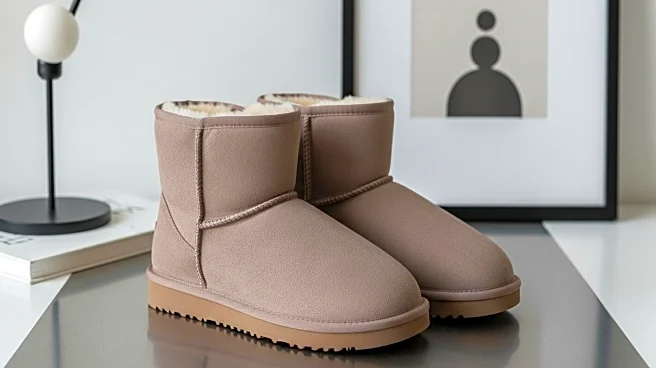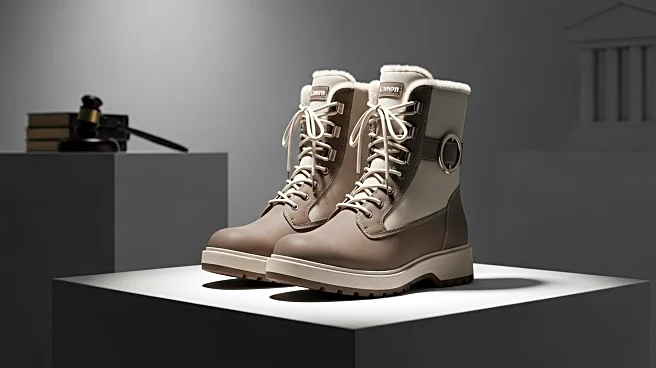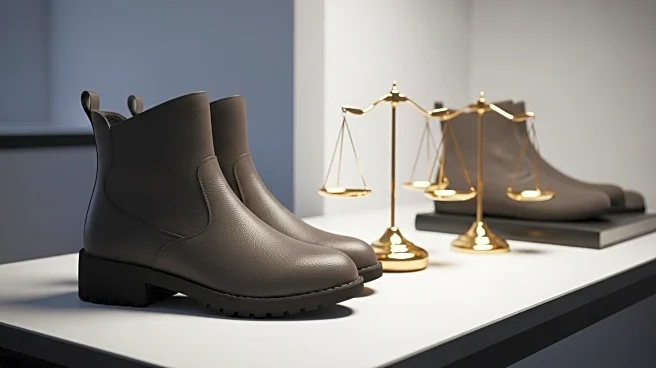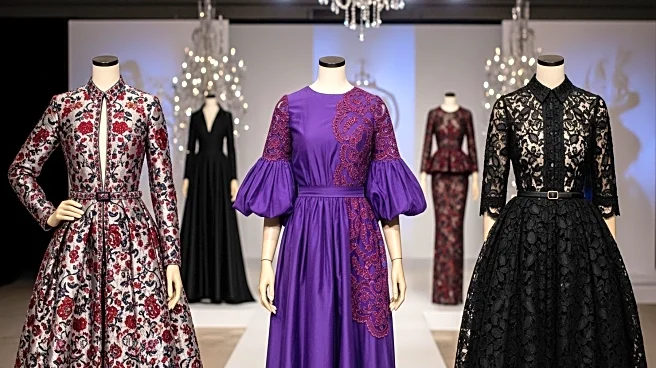What's Happening?
A federal court in California has ruled against Deckers Outdoor Corporation, the owner of UGG, in a case involving the alleged infringement of trade dress rights by Quince, a direct-to-consumer brand. The court found that two of UGG's popular designs, the Classic Ultra Mini boot and the Tasman slipper, are too generic to qualify for trade dress protection. This decision was made after Quince argued that the design elements of these UGG products, such as ankle-high suede construction and exposed stitching, are common features in the sheepskin footwear market. The court sided with Quince, granting them partial summary judgment and determining that these designs do not identify a single source, thus are not eligible for trade dress protection.
Why It's Important?
This ruling highlights the challenges fashion brands face in protecting their product designs under trademark law. The decision underscores the limitations of trade dress protection, especially for designs that are widely used across the industry. For UGG, this means a significant setback in their efforts to maintain exclusivity over their popular designs. The case also serves as a reminder to other brands that achieving trade dress protection requires demonstrating that a design is distinctive and not merely functional or aesthetic. The outcome could influence how fashion brands approach design protection and may lead to increased reliance on other forms of intellectual property protection.
What's Next?
While the court's decision limits Deckers' ability to claim trade dress protection for the Classic Ultra Mini and Tasman designs, the case continues with other claims, including those related to the Bailey Button boot. The ruling may prompt Deckers and other brands to reassess their strategies for protecting product designs, potentially leading to more emphasis on design patents or other legal avenues. The decision could also encourage competitors to introduce similar designs, knowing that the risk of legal repercussions has diminished.
Beyond the Headlines
The case illustrates the broader issue of how trademark law intersects with fashion design, where the line between functional and aesthetic features can be blurred. This ruling may lead to a reevaluation of what constitutes a protectable design in the fashion industry, potentially affecting how brands market and develop their products. It also raises questions about the balance between fostering innovation and protecting established brands from imitation.










